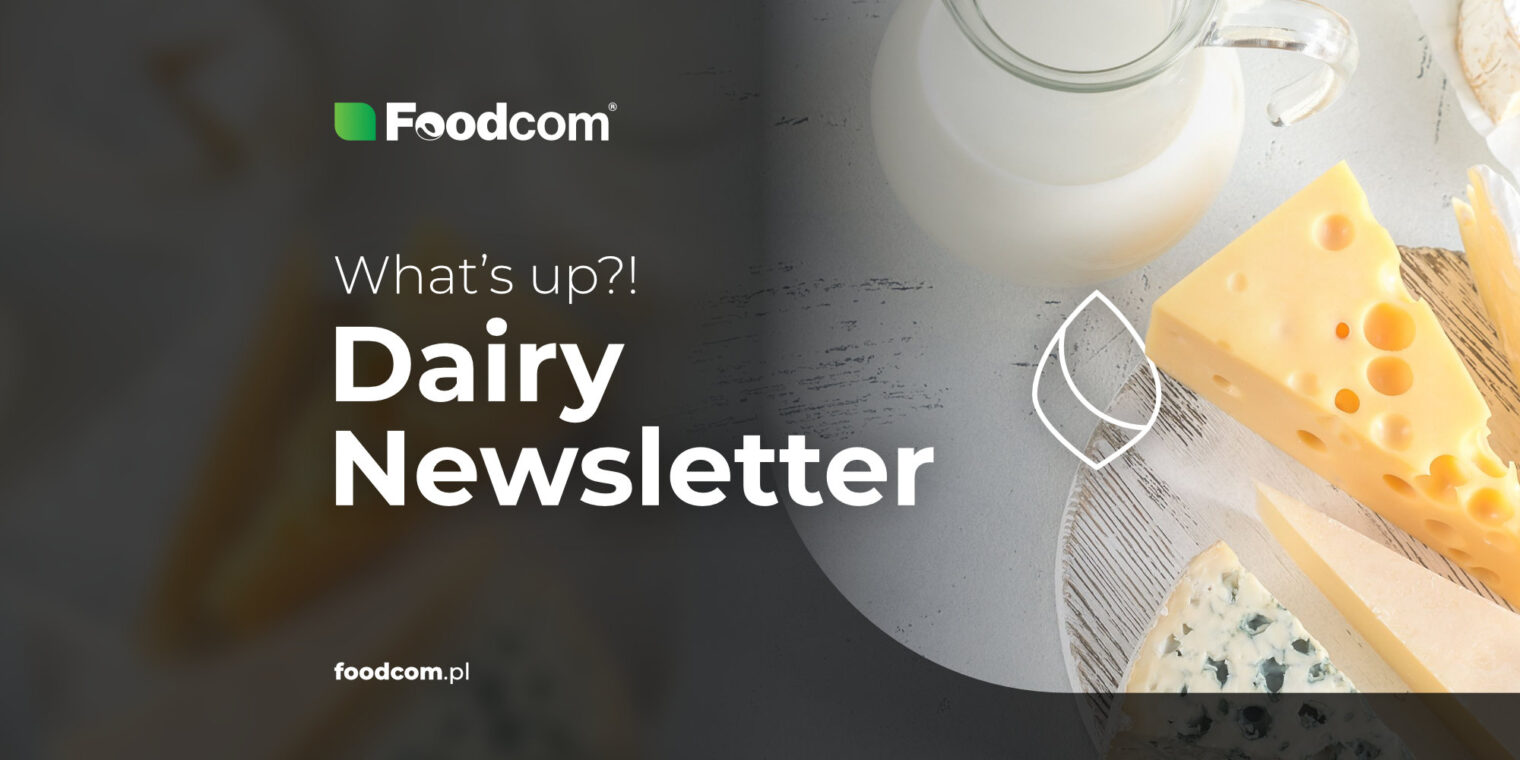Summary
Table of contents
Current times are tough for everyone, and the dairy industry is definitely no exception. Inflation and high prices are making consumers less willing to reach for products that are not essential, and some dairy producers are opting for higher payments to their suppliers to help them cope with the impact of higher production costs.
Recently, the dairy industry’s gaze turns to the United Kingdom. Proponents of plant-based milk substitutes are fighting harder and harder for what they believe in. Recently, activists from the organization Animal Rebellion have successfully attacked dairy stocks, which they believe has led to a shortage of milk on store shelves in north London. The activists have decided to put their campaign on hold due to the mourning of Queen Elizabeth’s death, but hope that the impact so far will successfully inspire consumers to turn to plant-based milk alternatives. At the same time, some experts warn that soaring milk prices could soon make milk more expensive than gasoline in the United Kingdom. If that does happen, milk prices will exceed gasoline prices for the first time since the 1980s. In addition, a public holiday introduced in connection with the funeral of Queen Elizabeth on Monday, September 19, could lead to a slowdown in transactions involving one of the parties in the UK.
The overall situation in the dairy market in the countries of the European Union is dynamic. There are price increases on the market for some products, such as Butter. In general, prices for dairy products are decreasing, which is due to the decline in milk, which is typical for this time of the year. The difficult economic situation is forcing some producers to make challenging decisions. Turkish cattle breeders, among others, are in such a situation. However, there are also small bright spots, such as dairy producers who support their suppliers with additional payments.
Continue reading to learn about this week’s market insights.
With us, you’ll never miss a thing!
The European Skimmed Milk Powder market is currently influenced by many factors, which has led to a narrowing of the price range for the product. A tight supply of farm milk has been limiting production for some time and keeping inventories relatively low. Unreliable gas supplies are also negatively impacting production. Limited supply is driving prices up, but demand is currently not very high. European prices are surpassing commodity prices from other sources, and inflation has reduced demand for food applications.
Most Western producers are extinguishing production for this product by the end of the year, due to low interest in export markets. Current production is to meet the needs of the domestic market, where monetization is not as good. In some cases, producers are turning away from FCMP product and directing their production capacity to Skimmed Milk Powder.
The limited amount of Milk Protein Concentrate on the market leads to an increase in the prevailing milk concentrate. Numerous inquiries, not only from the European market, indicate that there will not be sufficient coverage for this product until the end of the year. Buyers are also considering alternatives in the form of a product with a lower protein concentration, the price of which will be satisfactory given the scarcity of the 85% product.
Last week saw movement in the cheese market. The high demand was felt. Manufacturers face a dilemma when it comes to where to locate their production capacity. Cheese production seems attractive from their perspective, as it does not require as much energy as a product dried into powder. As usual at this time of year, cheese prices are rising, this time further fueled by record raw material prices.
European butter prices have risen. Current retail demand for Butter can be described as stable to increasing, while demand for Block Butter can be described as stable to decreasing. The increase in the price of Cream has not been reflected in consumer interest. Consumers are still eager for butter, but the lowest available price determines which brand they choose. Industrial butter buyers are holding off on transactions for now, hoping for lower prices. Current Butter stocks are sufficient to meet current demand, but production is constrained by low milk volumes, weak milk ingredients and strong demand for cream from other dairy producers. In the last week bids for butter have increased. Currently, customers are waiting for Q1 prices, as their needs for this period have not yet been met.
Cream and other liquid dairy products experienced growth in the past week. Overall, there is a lot going on in the market, and the situation is dynamic. In the northeastern and western United States, demand for cream is high and availability of the product is limited. This is having an impact on reduced butter production. At the same time, Cream prices have grown all over Europe.
European milk production is experiencing a typical annual decline. In some parts of Europe, summer heat and drought have abated, but milk production remains weak and milk components are low. In recent months, the volume of milk delivered to dairies has declined compared to the same period last year. Predictions for the future are uncertain from this point of view – on the one hand, there are reports of an increase in the total number of young cows, but some experts point out that the difficult financial situation of farmers could lead to a further reduction in the herd. Some Eastern European countries, such as Belarus, have reported a year-on-year increase in milk production. In Ukraine, however, milk production has decreased due to Russian aggression. According to domestic sources, the number of cows has dropped by about 15 percent since August, and milk production is down 14.4 percent. Spot milk prices across Europe have gone up in recent days.
Recently, the dairy industry’s gaze turns to the United Kingdom. Proponents of plant-based milk substitutes are fighting harder and harder for what they believe in. Recently, activists from the organization Animal Rebellion have successfully attacked dairy stocks, which they believe has led to a shortage of milk on store shelves in north London. The activists have decided to put their campaign on hold due to the mourning of Queen Elizabeth’s death, but hope that the impact so far will successfully inspire consumers to turn to plant-based milk alternatives. At the same time, some experts warn that soaring milk prices could soon make milk more expensive than gasoline in the United Kingdom. If that does happen, milk prices will exceed gasoline prices for the first time since the 1980s. In addition, a public holiday introduced in connection with the funeral of Queen Elizabeth on Monday, September 19, could lead to a slowdown in transactions involving one of the parties in the UK.
The overall situation in the dairy market in the countries of the European Union is dynamic. There are price increases on the market for some products, such as Butter. In general, prices for dairy products are decreasing, which is due to the decline in milk, which is typical for this time of the year. The difficult economic situation is forcing some producers to make challenging decisions. Turkish cattle breeders, among others, are in such a situation. However, there are also small bright spots, such as dairy producers who support their suppliers with additional payments.
Continue reading to learn about this week’s market insights.
With us, you’ll never miss a thing!
SMP
The European Skimmed Milk Powder market is currently influenced by many factors, which has led to a narrowing of the price range for the product. A tight supply of farm milk has been limiting production for some time and keeping inventories relatively low. Unreliable gas supplies are also negatively impacting production. Limited supply is driving prices up, but demand is currently not very high. European prices are surpassing commodity prices from other sources, and inflation has reduced demand for food applications.
FCMP
Most Western producers are extinguishing production for this product by the end of the year, due to low interest in export markets. Current production is to meet the needs of the domestic market, where monetization is not as good. In some cases, producers are turning away from FCMP product and directing their production capacity to Skimmed Milk Powder.
MPC 85%
The limited amount of Milk Protein Concentrate on the market leads to an increase in the prevailing milk concentrate. Numerous inquiries, not only from the European market, indicate that there will not be sufficient coverage for this product until the end of the year. Buyers are also considering alternatives in the form of a product with a lower protein concentration, the price of which will be satisfactory given the scarcity of the 85% product.
Gouda/Edam
Last week saw movement in the cheese market. The high demand was felt. Manufacturers face a dilemma when it comes to where to locate their production capacity. Cheese production seems attractive from their perspective, as it does not require as much energy as a product dried into powder. As usual at this time of year, cheese prices are rising, this time further fueled by record raw material prices.
Butter
European butter prices have risen. Current retail demand for Butter can be described as stable to increasing, while demand for Block Butter can be described as stable to decreasing. The increase in the price of Cream has not been reflected in consumer interest. Consumers are still eager for butter, but the lowest available price determines which brand they choose. Industrial butter buyers are holding off on transactions for now, hoping for lower prices. Current Butter stocks are sufficient to meet current demand, but production is constrained by low milk volumes, weak milk ingredients and strong demand for cream from other dairy producers. In the last week bids for butter have increased. Currently, customers are waiting for Q1 prices, as their needs for this period have not yet been met.
Cream
Cream and other liquid dairy products experienced growth in the past week. Overall, there is a lot going on in the market, and the situation is dynamic. In the northeastern and western United States, demand for cream is high and availability of the product is limited. This is having an impact on reduced butter production. At the same time, Cream prices have grown all over Europe.
SMC
European milk production is experiencing a typical annual decline. In some parts of Europe, summer heat and drought have abated, but milk production remains weak and milk components are low. In recent months, the volume of milk delivered to dairies has declined compared to the same period last year. Predictions for the future are uncertain from this point of view – on the one hand, there are reports of an increase in the total number of young cows, but some experts point out that the difficult financial situation of farmers could lead to a further reduction in the herd. Some Eastern European countries, such as Belarus, have reported a year-on-year increase in milk production. In Ukraine, however, milk production has decreased due to Russian aggression. According to domestic sources, the number of cows has dropped by about 15 percent since August, and milk production is down 14.4 percent. Spot milk prices across Europe have gone up in recent days.
Categories:







